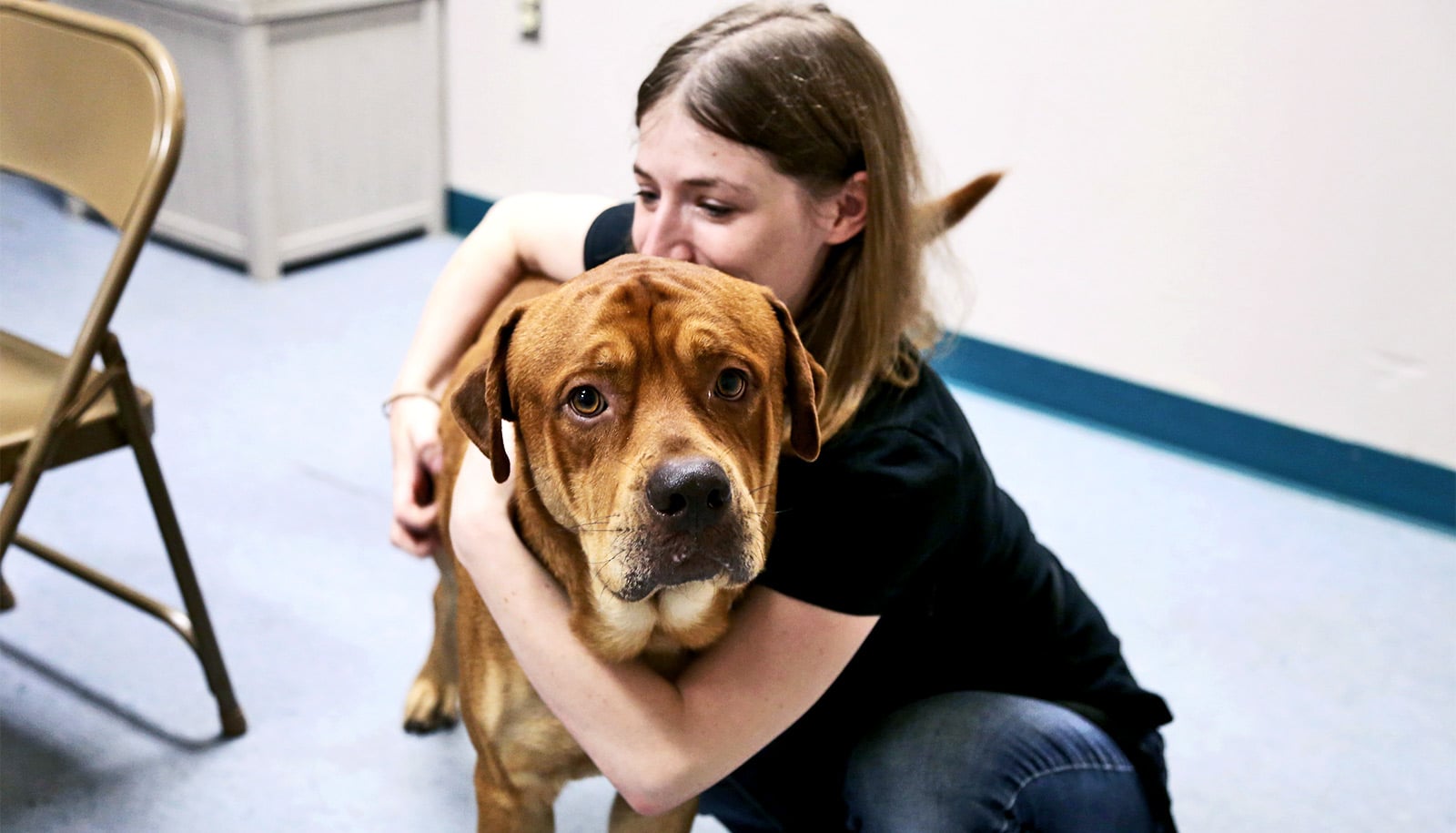Shelter dogs awaiting adoption fare better with a canine companion than when they’re housed alone, according to new research.
The study revealed that companiable dogs housed together showed fewer signs of stress and are adopted more quickly than dogs that were housed by themselves.
Nearly 4 million dogs enter shelters every year, according to the American Society for the Prevention of Cruelty to Animals. The study’s findings offer one possible solution for animal shelters struggling with limited space and long waits for dogs needing adoption.
“Despite being a social species, dogs are often housed alone in shelters to reduce disease transmission and possible injury from inter-dog conflict. But this social isolation can work against dogs’ behavioral health and adoptability,” says Erica Feuerbacher, associate professor in the Virginia Tech College of Agriculture and Life Sciences’ School of Animal Sciences. “We wanted to examine whether pair housing could be a useful intervention for improving shelter dogs’ welfare.”
Published in the journal PLOS ONE, the study is the first to examine how US-based shelter dogs fare in cohousing versus solitary housing. Previous studies of the benefits of cohousing dogs focused on laboratory beagles and veterinary school dogs who were housed long-term—or for more than six months—in kennels for teaching and research purposes.
In contrast, shelter dogs spend an average of 35 days waiting to be adopted and are frequently accustomed to social interaction prior to their entry.
For the study, the researchers followed 61 dogs over seven days at the Humane Society of Western Montana. Researchers placed half the dogs in cohousing with partners who were matched through a brief introduction and compatibility test. The other half were kenneled alone.
The researchers observed the dogs throughout the week, recording common stress behaviors, including lip-licking, whining, and pulling back their ears, and took daily samples of the dogs’ urinary cortisol and creatinine to measure biological indicators of stress.
“Dogs housed in shelters can face chronic levels of stress due to noise, confined kennel spaces, and limited access to social interaction,” Feuerbacher says. “This can reduce their overall well-being, which might impact their adoptability.”
Dogs housed together not only showed fewer stress behaviors, but they also were adopted, on average, four days sooner than single-housed dogs.
Feuerbacher hopes that the study’s results will encourage animal shelters to match dogs with suitable “roommates” as a way to alleviate dogs’ stress and show them at their best to potential adopters.
“Many potential adopters might already have a dog or would like to engage in social activities with their dog,” Feuerbacher says. “Clearly exhibiting that a dog can successfully interact with other dogs might highlight those dogs as good matches-leading to more successful adoptions.”
Additional coauthors are from the Royal Veterinary College in London; the Lewis and Clark Humane Society in Helena, Montana; and the Humane Society of Western Montana.
The WALTHAM Foundation funded the work.
Source: Virginia Tech



